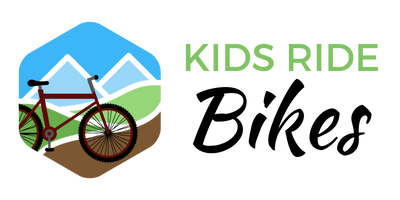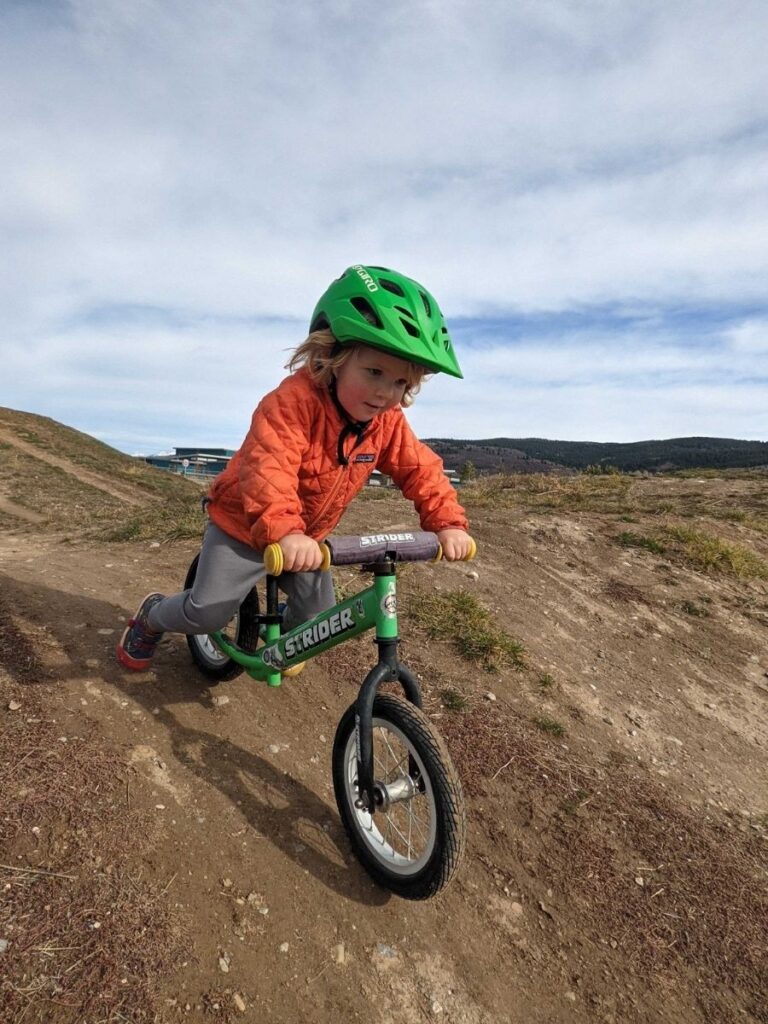Balance bike vs training wheels
Teaching a child to ride their first bike is an amazing experience as a parent, but one that can also be somewhat challenging and frustrating. The introduction to balance bikes in the past recent years has been a game-changer for kids learning to pedal and so much different than the way many of us learned on training wheels.
This article will help you understand the difference between training wheels and balance bikes for learning to ride AND the pros and cons to each.
As an Amazon Associate and member of other affiliate programs, we earn from qualifying purchases.
Why training wheels are actually hindering your kid:
- They teach kids to balance on training wheels, not on their own two wheels.
- They are slow and inhibiting (even for the best of riders – and I’ve seen some VERY proficient training-wheel riders.)
- They don’t do corners well.
- They become an unnecessary crutch that prolongs a movement towards riding without training wheels at all.
Since most of us learned to ride with training wheels, teaching our own children a completely different method can be a bit intimidating. It was definitely a learn-as-we-go process. Looking back on it now, though, it really wasn’t difficult.
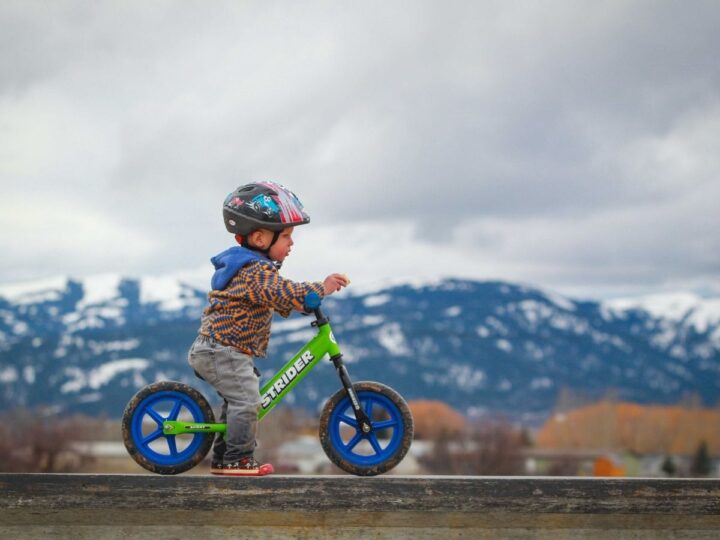
How to Use A Balance Bike
The balance that children learn by riding a balance bike is all they need for eventually riding a pedal bike.
Training wheels only provide an unnecessary crutch during transition stages. In fact, training wheels only teach children how to ride a bike with training wheels!
Training wheels delay a child’s ability to learn the balance needed for pedaling. Beware of bikes that come with training wheels especially from big box stores, they are often heavy with poor geometry. They come in the designs your kids crave but they are the hardest bike for your child to learn to ride.
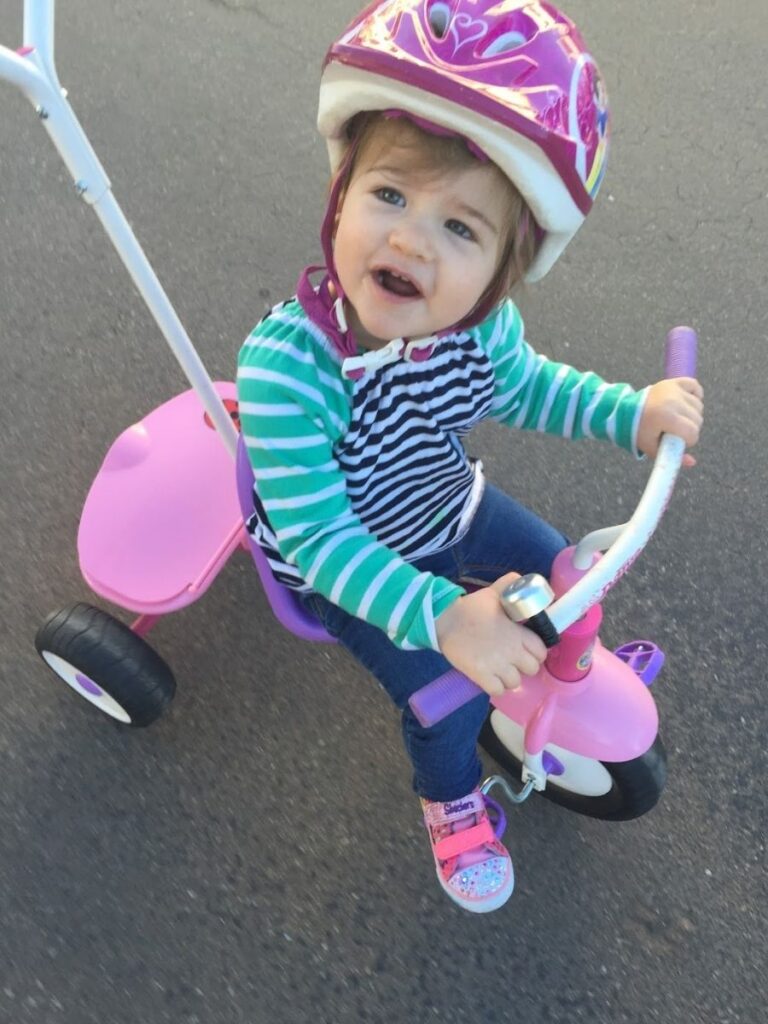
Tricycles aren’t helpful either! 
We made lots of mistakes with my first. 
Training wheels only hindered her ability to learn balance.
Big box stores like Target and Walmart aren’t the only companies still holding onto training wheels. Most mainstream bike companies like Trek, Giant and Fuji all cling to training wheels knowing they impede kids ability to learn to ride because parents are reluctant to buy a bike without them.
Specialized has fully embraced the balance bike after years of making clunky kids bikes (compared to their adult bikes-heavy useless shocks, coaster breaks and training wheels). However, you don’t need their silly $1k Hotwalk Carbon balance bike to learn to ride.
Don’t let their lack of progress fool you, these bikes have slightly better geometry but those heavy training wheels will still hold your kid back from learning to ride.
Training wheels and balance bikes are not the same. One teaches your child balance and how to control speed, the other limits your child’s ability to learn and ride safely.
It’s ok for kids to ride a balance bike until they are comfortable with pedals.
Balance bikes come in a variety of sizes to accommodate all ages of kids. If your child is not ready for pedals for 3 years, it is perfectly ok and normal. Every kid is different.

Day one. Super excited. 
Friends can splash too! 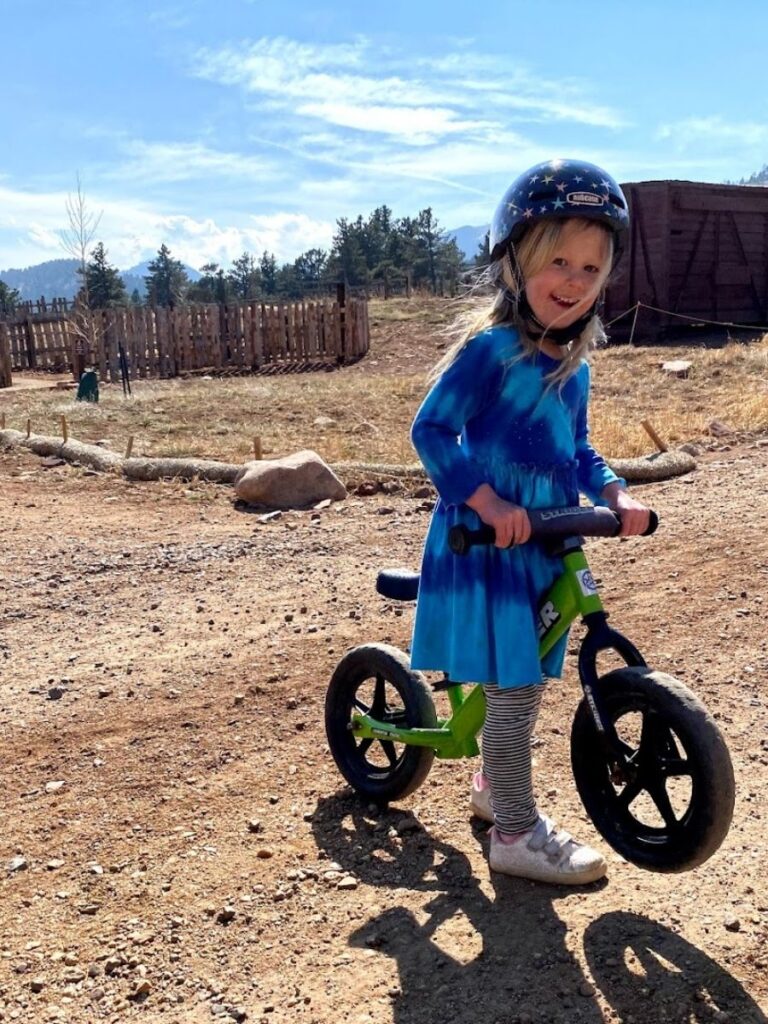
Freedom to explore!
Strider bikes even makes a 16″ and a 20″ balance bike for kids aged 6+ and 12+ respectfully. They are for learning, for doing tricks, and for helping with balance and coordination for bigger kids and adults. We highly recommend the Woom 1 Plus for kids aged 3-6ish who are learning to balance.
There are still plenty of kids 6-8 years old learning to pedal. Learning to ride a bike isn’t a race, it’s a journey that if done with patience and fun can result in a life long cyclist.
Kids can start as young as they can fit on a bike and walk well (usually around 18 months).
The progression is them walking while on the bike, then sitting down on the seat and walking, then running and balancing. There is no “right age” that it happens. The more exposure in small increments, the better.
Make a habit of bringing the balance bike on walks, hikes, or short trips like to the grocery store or school pick up. They can be stuffed into a stroller, bike trailer or strapped to a backpack when your child gets tired.
Woom offers an excellent carry strap that makes bringing the little bike along a lot easier. It’s much easier for a child to practice in a low key environment while you walk along side them.
Let your kid take the lead
Any sort of pressure usually has adverse effects. The main goal is to help them love biking.
While it may seem crazy, allowing kids to ride (clean) bikes around the house is a great way for them to try on the bike without the pressure of “going for a ride” or honestly, even getting dressed.
Relax and let your child have fun.
Very young kids will only want to practice for very short periods of time anyway, it’s easier not to fuss with getting them ready for outside play if they just want to take a lap around the kitchen.
It’s much easier to allow a small child to hold the bike and walk through the house than to move along a trail at a snails pace.
Once they get the hang of it, children ride much faster on a balance bike than they can with training wheels.
It provides them freedom of movement, an opportunity for independence, and continuing practice on their balance. The emotional benefits go much further than the bike.
Balance bikes allow kids to learn at their own pace, setting their own boundaries within limits they set for themselves. I’ve seen many balance bike riders attempt pump tracks, skinny’s, drops and jumps.
Kids who can balance safely with feet and tires are much more likely to safely push their progression. I’ve never seen a child on training wheels attempt anything more than a high speed turn (which doesn’t end well unless your kid has learned to drift).
Skills learned while biking are not restricted to JUST biking.
The balance training and strength transfers to skiing, climbing and stand up paddle boarding just to name a few. Even the youngest of children can benefit from core muscles used for the next seasons activity.
As a parent, there is much freedom for you too.
On balance bikes they can keep up at a younger age while you walk/bike/run with them – you get out, they burn off some energy.
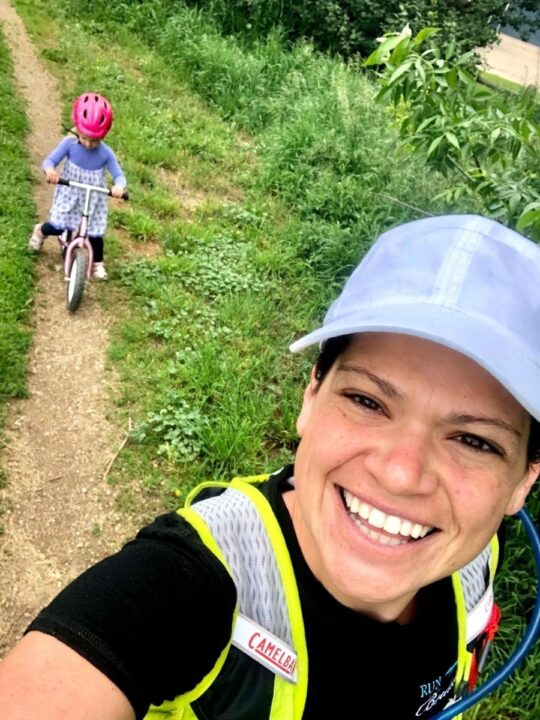
The more you get out there, the fast they get. By the end, kids can ride as fast as parent’s can run. Trail runs with kids on balance bikes become an actual possibility.
Kids who struggle to keep up on a hike can now blaze the trail on little wheels with great confidence.
How to teach a toddler to pedal (or an older kid!)
Many times the argument for training wheels or a tricycle is learning how to make the pedaling movement and strengthen their muscles. While there is some validity to that, both of our kids (and most of the others I know who learned in the same way) did not ever ride either.
When you can put your child on a balance bike before they are two, there is no need for a tricycle. Remember that when they are walking/running on the balance bikes they are building muscles to do the pedaling.
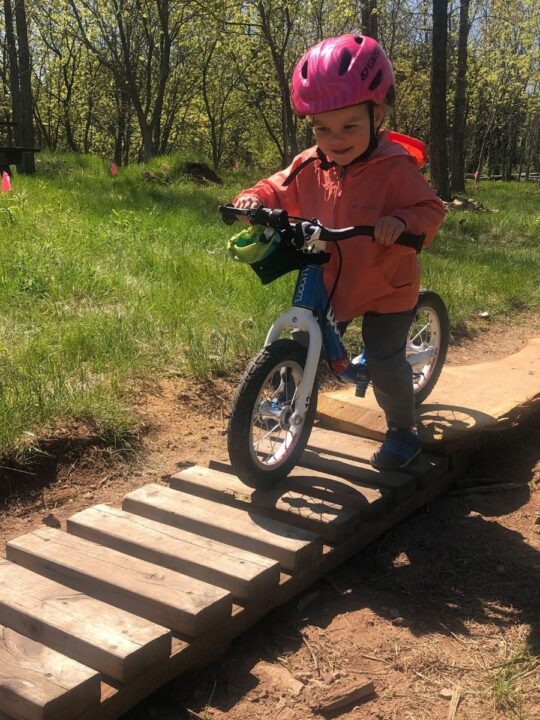
The balance is the hard part – pedaling comes when they’re ready and is much less of an obstacle than most people think. Here are some tips for teaching a kid to pedal a bike.
My kid just will NOT ride a balance bike!
I have some very good friends with kids that were offered a balance bike, but just refuse to do it. They have no interest nor motivation.

Learning balance at 5.5 years old 
Learning to pedal post balance bike 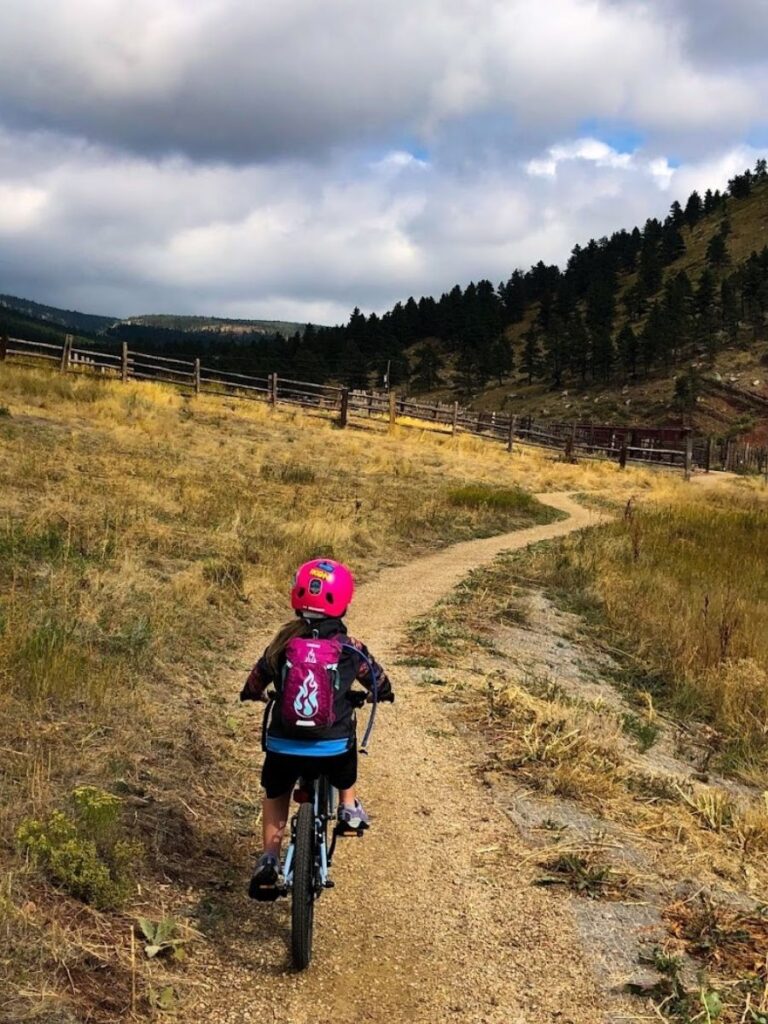
Taking off on the trails.
Here’s the reality – some kids will be crazy about biking, others will not. However, it’s important to not give up too early (again – those larger balance bikes are a great tool!)
Here’s some tips to help your reluctant child ride a balance bike
- Get on a bike too. If they don’t see YOU biking, why would they want to?
- Monkey see, monkey do (AKA “Peer Pressure is a Beautiful Thing”): Get them around other kids on balance bikes. P picked it up much faster because he saw his brother and friends doing it. It’s great for them to see other kids riding pedal bikes too, but they’ll follow quicker when everyone is doing the same thing.
- Get out there a little bit every day. Even just 5 minutes.
- Making your biking time special family time or one-on-one with a parent time.
- Bring the bling – a fun horn or some streamers makes a huge (HUGE) difference sometimes. Silly, but true!
- Relax – they’ll do it when they’re good and ready.
- Help them foster a love of bikes (and therefore a desire to learn) any way you can. Using a trail-a-bike or a WeeHoo is a great way to help the family continue to get out there.

Remember shoes on, pedals off! 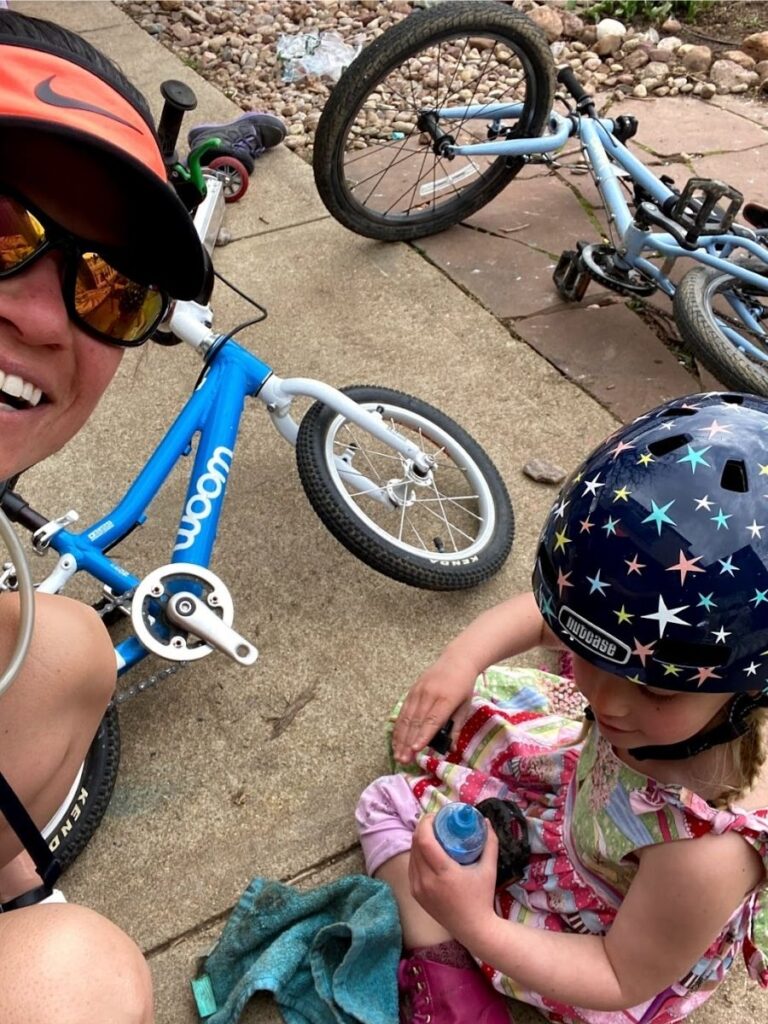
Putting the pedals back on. 
I learned to pedal!
Finally, remember to model good biking behavior and enthusiasm. Wear your helmet every time (and be sure they have theirs on too from the very beginning.) Teach them traffic rules as you go (stopping at stop signs, etc.) by modeling and talking them through it.
Need some more tips for reluctant riders? Check them out here.
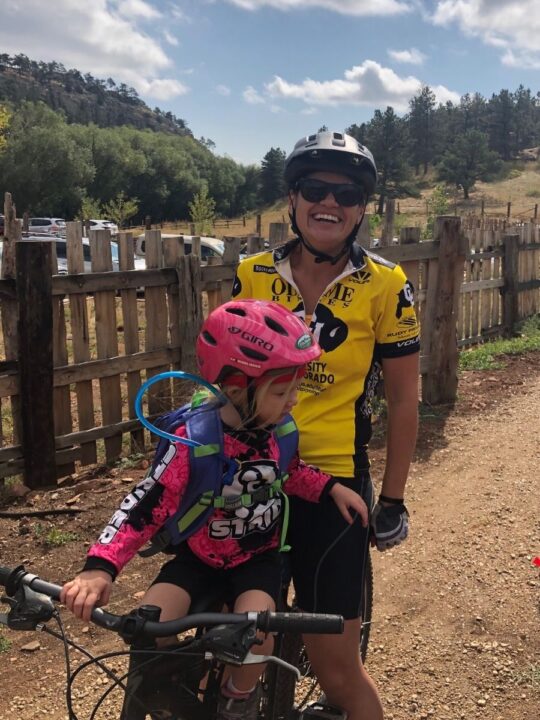
Balance bikes come in different sizes
Not all balance bikes are the same size or shape. They come in many different materials too (wood, metal, pneumatic tires, polymer tires, etc.) Some have hand brakes, some do not. I always say the best option is to see them in person. However, in this day and age, that isn’t always possible.
You can also just take the pedals off a normal bike for learning. It works, but spending ~$100 or so on a lighter, smaller balance bike is a worthwhile investment in our opinion. In fact, we think that it’s some of the best money you can spend on a toddler.
If you do decide to just take the pedals off, choose a light bike with good geometry. Our favorites are listed here.
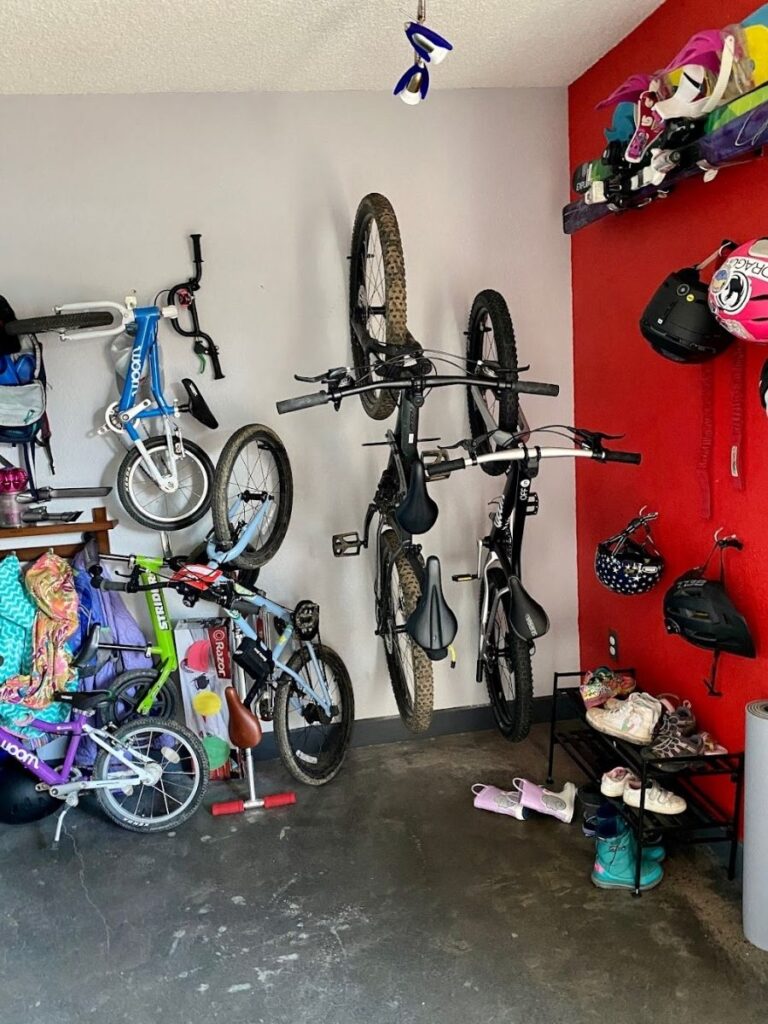
There’s always room for one more bike! 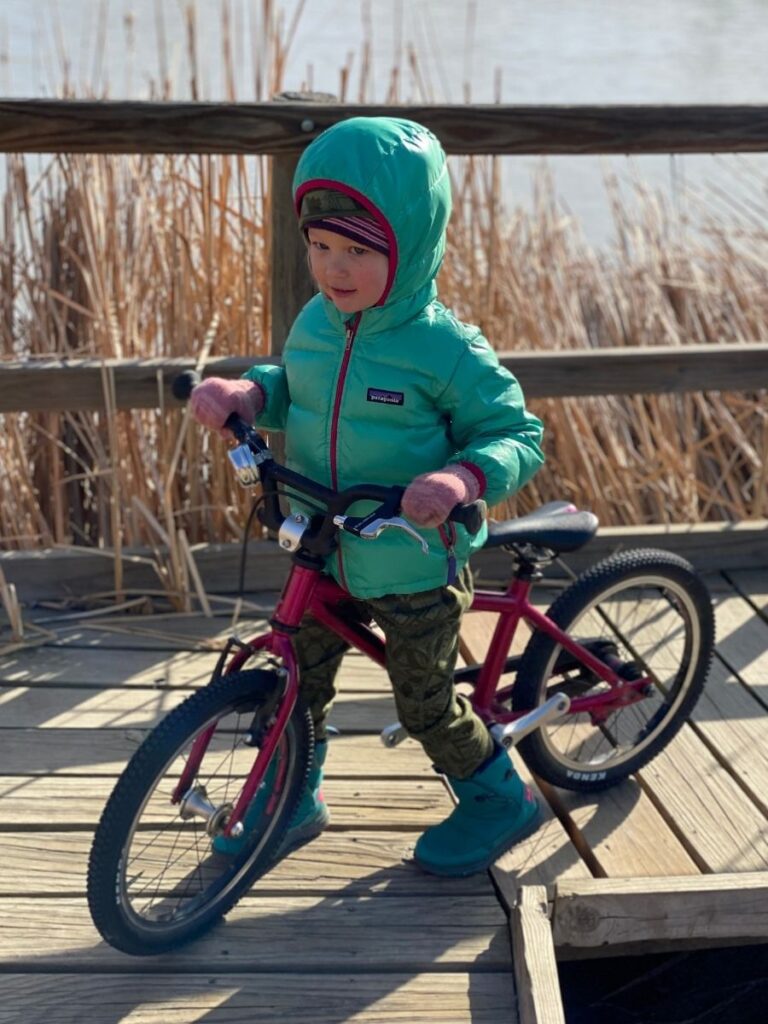
Pedals off an Islabike Cnoc 14 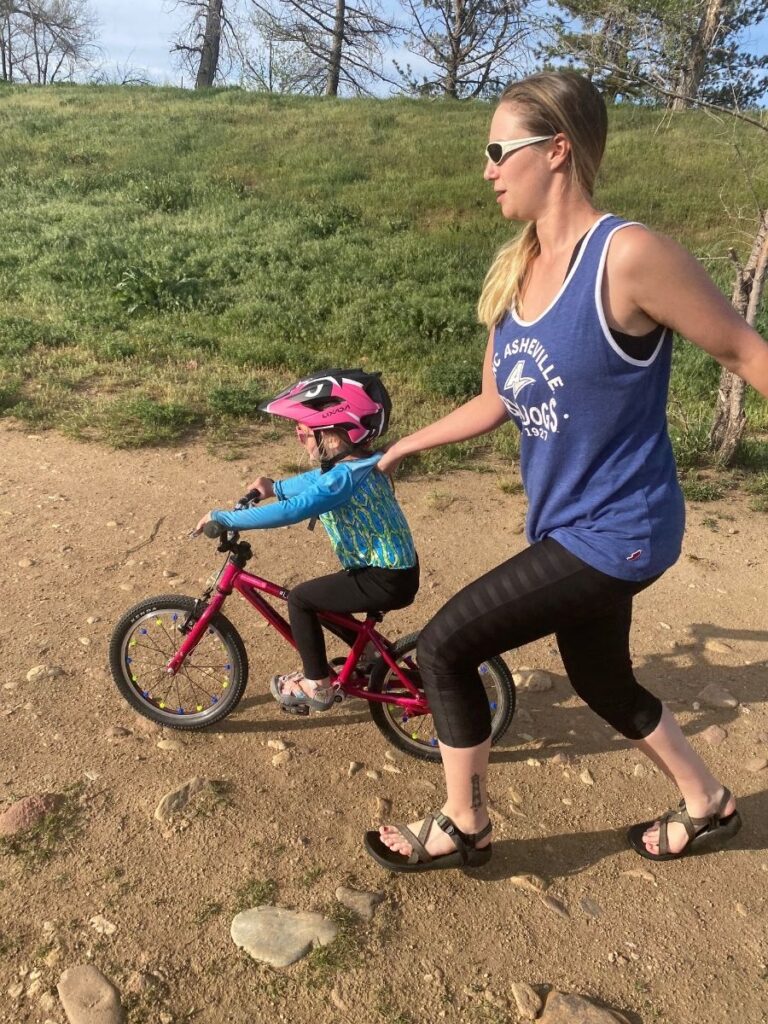
Just a little help with pedals.
Races and Events
So your kid is now a speed demon on their balance bike. There are many awesome races and events for them to enjoy.
Strider hosts local races around the country and world. The regular races are fun and relaxed. If your kid does love racing, there are more competitive races called Strider Cup.
Events slowed during covid but there are a few coming up, parents be ready for a silly competitive atmosphere including full face helmets, matching kits and decked out bikes.
Check local bike shops and cycling clubs for more events. We have a great little race in Boulder at our local bike park sponsored by IMBA. Not all races are competitive, some include having kids wear costumes or light up their bikes for a night ride.
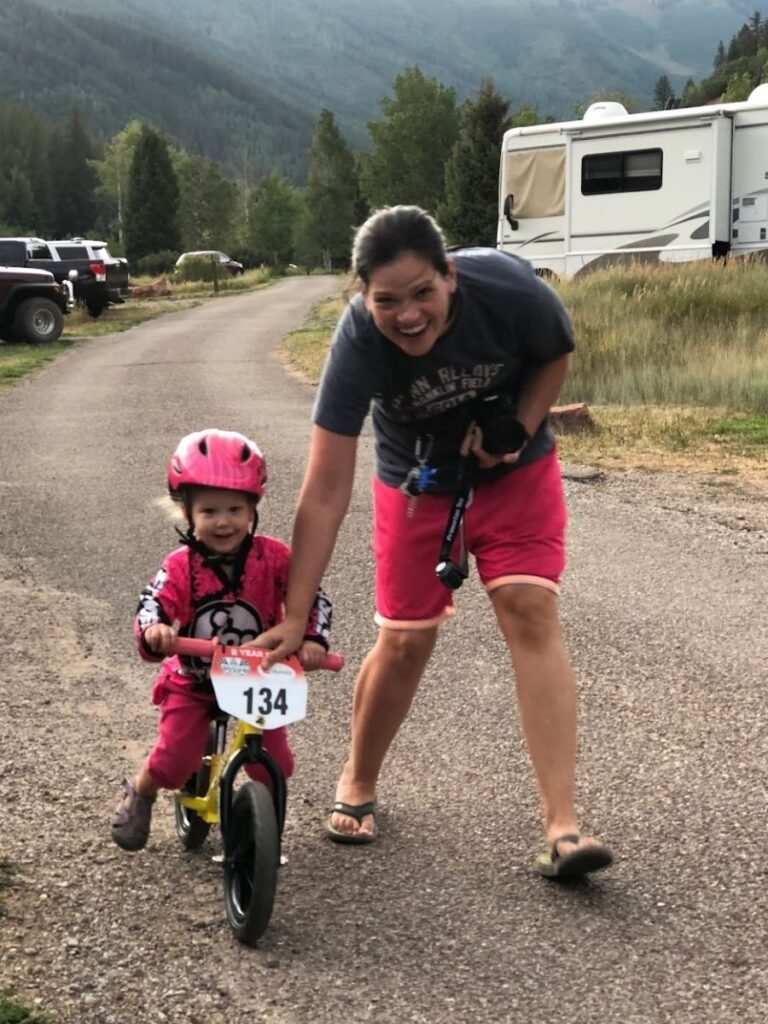
A speed demon is born. 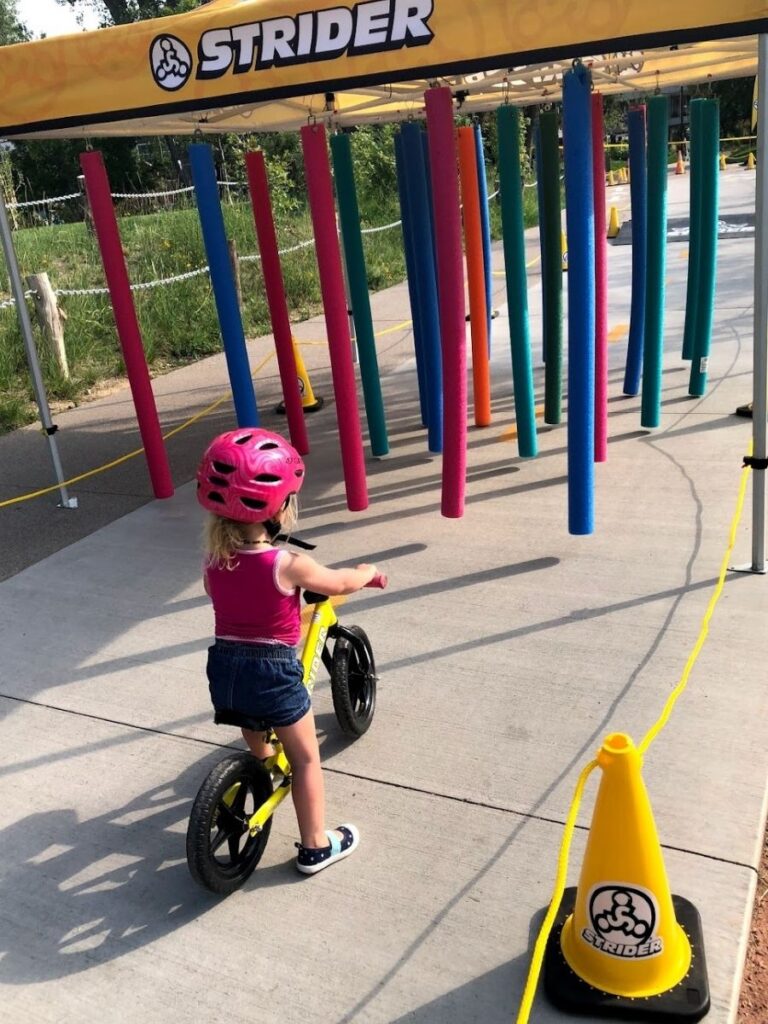
Halted by pool noodles. 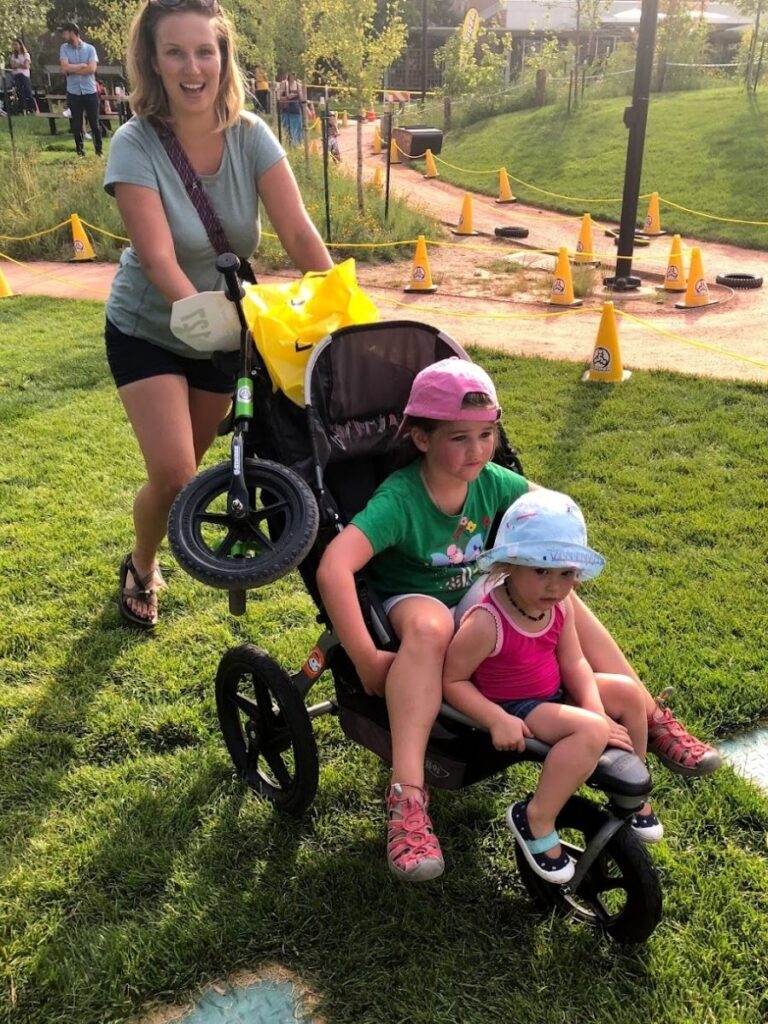
Balance bikes are easy to transport!
Balance bikes make great trick bikes
These bikes are good for learning tricks as well as building confidence on harder trails. They may end up being used for a backyard ramp or to help a neighbor kid learn to balance.

Kids enjoy moving back and forth between balance bike and pedal bike as they navigate pedaling over different surfaces and in new places. They are easy to store and a joy to pass on.
Spread the message: Balance bikes are better!
While balance bikes are far more prevalent than they once were, there are still many parents who just don’t know there is a better option.
An easier, safer and definitely better system exists for learning to ride a bike. Just say no to training wheels. Trust the process and let them learn to balance at their own pace.
Training wheels may seem helpful when kids are trying to keep up but they impede their ability to actually keep up with their friends or siblings. Taking the time to learn to balance first will give them the wings to fly with confidence long into the future.
Related Articles:
- Help! My Kid is Struggling to Pedal!
- Balance Bike Reviews
- Balance Bikes Aren’t Just for Toddlers
- How To Teach a Child to Pedal a Bike
Balance Bike or Training Wheels
© 2022, Kids Ride Bikes. All rights reserved. Republication, in part or entirety, requires a link back to this original post and permission from the author.
